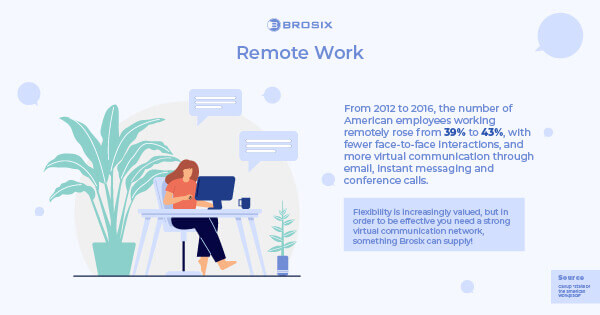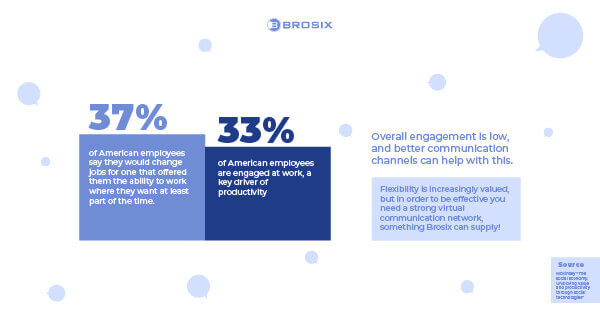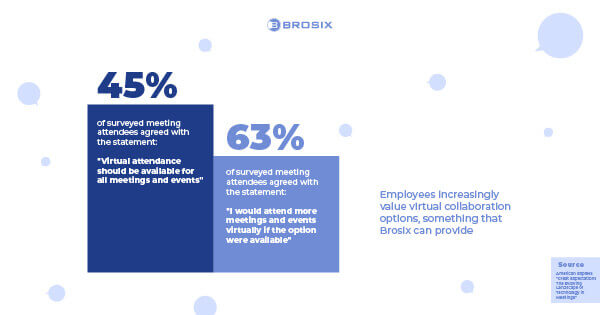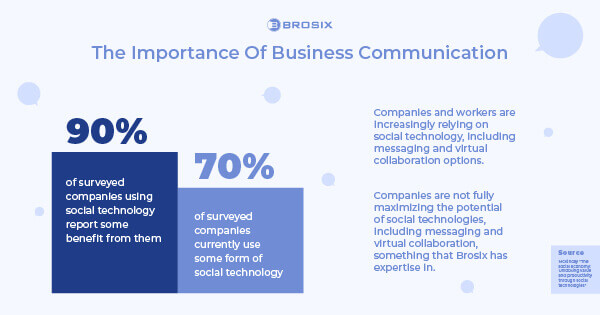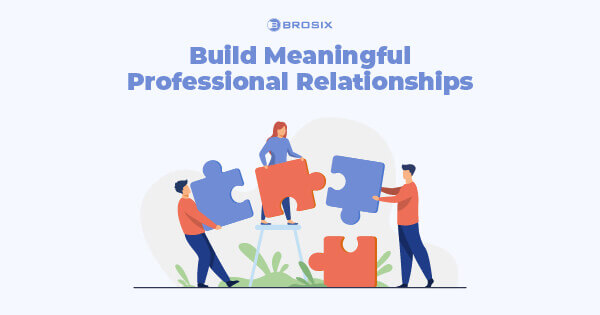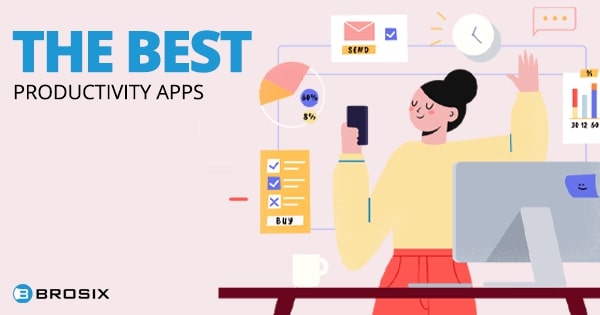Communication is hugely important. While few would dispute this, we tend to emphasize communicating in our personal lives. Businesses, on the other hand, often focus on how to communicate better with customers.
Sadly, we rarely consider the consequences of how we communicate at work. Yet neglecting these horizontal and vertical lines of communication in the workplace can have a dramatic effect. Poor communication can impact everything from collaboration between coworkers to decision making, the implementation of management philosophies and strategies, the efficiency at which things get done, and overall business success.
Why Good Internal Communication in the Workplace is Important?
Good internal communication is getting harder to achieve, especially as more and more teams work virtually. But that’s precisely why it’s more vital than ever.
Productivity
Up to 28 hours a week is spent writing emails, searching for information, and collaborating internally. Effective communication channels not only keep your knowledge workers from wasting nearly the entire workweek spinning in circles, but also help you avoid crushing employee engagement and morale.
Flexibility
Remote work is here. While the COVID-19 pandemic has accelerated this transition, employees increasingly demand more flexible working conditions. Business-specific technology such as instant messaging apps, video conferencing tools, and virtual collaboration software ensure agility in the workplace without sacrificing productivity.
Team Culture
Internal communication is often the main casualty of remote work. In fact, remote workers cite loneliness and disconnect as the biggest drawbacks of working from home. Having an effective internal communication strategy in place helps you avoid a disengaged workforce and paves the way for a true team culture that drives performance.
7 Tips for Better Communication With Coworkers
Healthy communication can only take root by being proactive. Luckily, that’s why you’re here! With these simple steps, you can begin to promote a culture of real connection and collaboration. Better yet, they’re achievable in practically any work environment.
So here’s a list of 7 tips for effective communication at work:
- Put in place clear communication channels
- Respect others’ communication preferences
- Examine how you communicate
- Keep written communication simple and direct
- Build meaningful professional relationships
- Listen attentively
- Criticize constructively
Now, let’s expand on these:
1. Put in Place Clear Communication Channels
Communication at work can suffer for the simple fact that employees don’t know how they should communicate. If the power structure is ambiguous, it may not be clear who reports to whom. Other times, employees may not know where to find information. And if you don’t have robust channels to handle diverse flows of information, communication can grind to a halt.
A good communication strategy should account for all of this. Each team, regardless of its size, functionality, or level of formality, must have a clearly defined pecking order with each employee knowing where they fit. This helps to more swiftly resolve issues and makes it easier to communicate and collaborate.
Implement a searchable company wiki with a designated knowledge manager. This reduces the number of unnecessary questions and wild goose chases for information that disrupts workflows.
Finally, consider a team communication tool, such as Brosix. An all-in-one instant messaging software for businesses, Brosix offers rich communication and collaboration features including one-to-one and group chat, voice and video calling, a suite of collaboration tools, and robust administrative control features. It’s designed to foster better communication between coworkers.
2. Respect Others’ Communication Preferences
There are bound to be a variety of preferred communication methods around the office. After all, not only are different generations working together under the same corporate roof, but multiple means of communicating, too.
If there’s a coworker who never responds to emails, stop emailing them. If the IT team prefers to be reached via chat, send an IM instead of wondering why they’re not picking up.
If you’ve got a company intranet or HR portal with employee profiles, have team members state their preferred communication methods and tools. Get to know your coworkers’ individual preferences and find them there.
3. Examine How You Communicate
Sometimes ineffective communication isn’t down to the other party at all. It’s you. Speak in corporate lingo or open up too much personally and coworkers may tune out or shy away from you altogether. Pack your instant messages and emails with emojis and colleagues may not take you seriously. Is your language appropriate for meetings or conversations with superiors?
Moreover, pay attention to nonverbal cues like a lack of eye contact or poor body language, which can cause others to disregard you or take advantage of you.
How you communicate is a reflection of your professionalism. If you’re struggling to get your message across, examine your own communication style and preferences. Having a better grasp of how you communicate can help you rectify any weak points, as well as assert yourself and your message more effectively.
4. Keep Written Communication Simple and Direct
Keep written communication short and sweet. There isn’t enough time in the day to dig through paragraphs-long emails. Overly complex explanations and recommendations from the get-go can confuse. Instead, assume the recipient will either understand everything directly or respond with their own questions; then you can clarify or elaborate as necessary. Also, avoid acronyms and overly technical jargon as they slow down the process. If you have to go deep into detail, use subheadings, bullet points, and bold fonts to highlight key takeaways.
5. Build Meaningful Professional Relationships
Finding ways to interact on a more personal level opens the door for meaningful communication. So devote some time to getting to know your coworkers. After all, you’re already spending most of the week with these people!
Simple team-building activities can help, and they don’t have to be rigorously planned. Sharing photos, dedicating a channel for casual conversation, having a virtual coffee, or playing virtual quiz games can be carried out on channels which you probably already make use of, such as instant messaging, group chats, and video calling.
This allows coworkers to share personal experiences and build professional relationships fueled by trust and mutual respect. It even makes it possible for employees to build sincere camaraderie with team leaders and supervisors, smoothing the workflow of your business.
6. Listen Attentively
Of all the telltale signs that communication could be better, listening flies under the radar. That’s because most of us are actually bad listeners, yet we don’t even know it. Multi-tasking while someone’s talking to you, already planning your response, or interrupting, are all indications that your listening skills could use some work.
When someone’s talking to you, give your full attention. Take notes, jotting down quick one or two-word reminders. Wait for them to finish, and then ask questions to validate their points. Practicing empathetic listening can have the knock-on effect of encouraging your coworkers to improve their own listening, as well.
7. Criticize Constructively
No one enjoys having their faults pointed out. So when you have to have a tough conversation, keep it constructive. Embarrassing someone or demeaning them won’t produce a better outcome. Give concrete advice or tips on how to improve. Consider regular feedback that includes positive reinforcement. When staff are consistently kept in the loop on performance-related issues, feedback and criticism are less intimidating.
Benefits of Effective Communication at Work
By simply communicating better, businesses can realize many specific benefits. These are some of the most tangible advantages according to leading professionals’ thoughts on communication.
- Real-time information and knowledge sharing
- Project and task progress tracking
- Coordination of schedules and responsibilities
- Information safety and security
At Brosix, we take this advice to heart. Communication is the essence of our business, after all. We strive to help coworkers and teams communicate better through our real-time messaging and collaboration tools, advanced administrative control options, and best-in-class security. Try Brosix today and discover how it can help your business.
Wrap Up
Developing strong communication skills is important in the workplace environment especially. As you embark on refining your verbal skill set, remember that communication is not solely about words but also encompasses nonverbal language and collaborative dynamics. The journey toward becoming a more effective communicator involves the cultivation of habits that foster connection, clarity, and collaboration. Making the effort will help both your personal and professional development.
FAQ
What are the different types of workplace communication?
The 4 different types of workplace communication are:
- Verbal (speaking and listening)
- Nonverbal (facial expressions and body language)
- Written (emails, memos, reports, etc.)
- Visual (charts, graphs, presentations, etc.)
How can I improve communication with coworkers?
You can improve communication with your coworkers by:
- Being approachable and open-minded
- Communicating openly and honestly
- Participating in team meetings regularly
- Providing recognition and feedback
- Encouraging a positive and supportive work environment
How can I improve my communication skills at work?
You can improve your communication skills at work by:
- Listening attentively
- Maintaining eye contact
- Showing appropriate body language
- Speaking clearly and concisely
- Asking clarifying questions
- Being open to feedback from colleagues and supervisors
- Seeking out training and development opportunities
- Reflecting on and learning from your communication experiences
What role does nonverbal communication play in effective workplace communication?
Nonverbal communication plays a significant role in effective workplace communication as it involves gestures, tone of voice, facial expressions, and body language. It can convey meaning, emotions, and attitudes, and can greatly impact the interpretation of spoken words.
How does effective communication contribute to team collaboration?
Effective communication in the workplace is essential for team collaboration as it promotes understanding, clarity, and transparency. It ensures that everyone is on the same page, fosters a sense of trust and mutual respect, and facilitates the sharing of ideas and feedback.
What are some communication habits of effective communicators?
Some communication habits of effective communicators include:
- Active listening
- Being present and fully engaged in conversations
- Using clear and concise language
- Being mindful of nonspoken signs and gestures
- Adapting communication style to suit the needs of the audience





